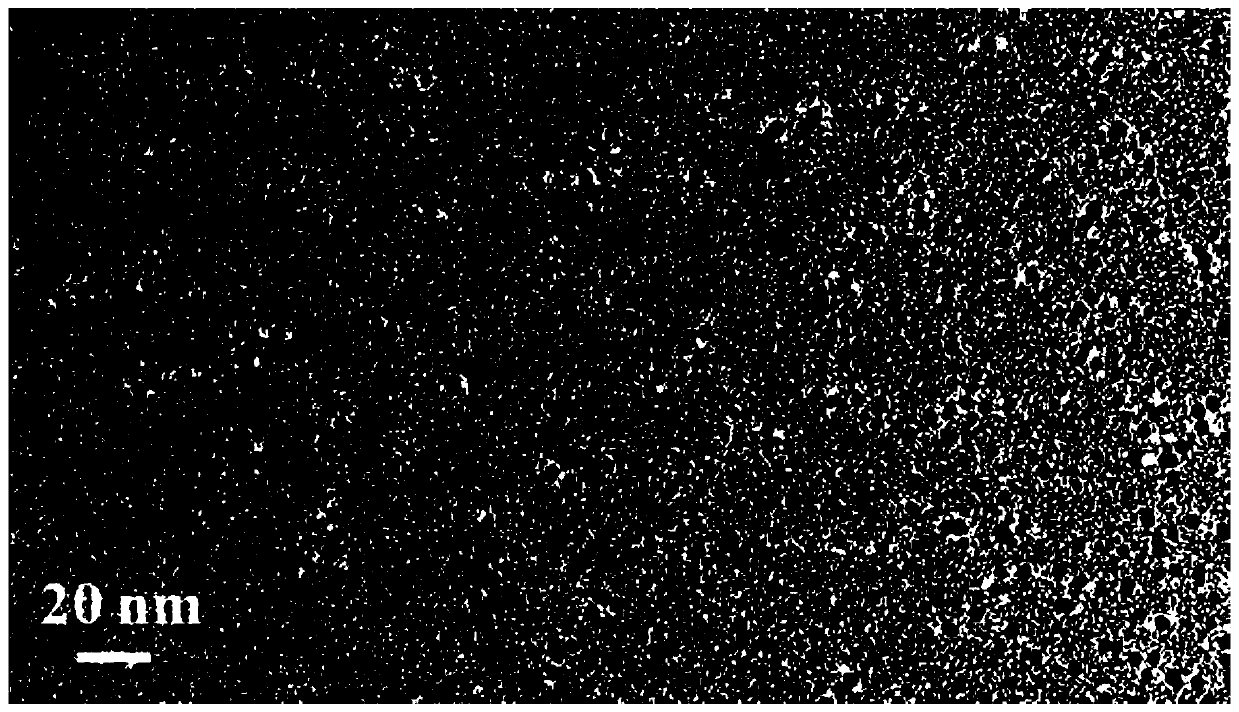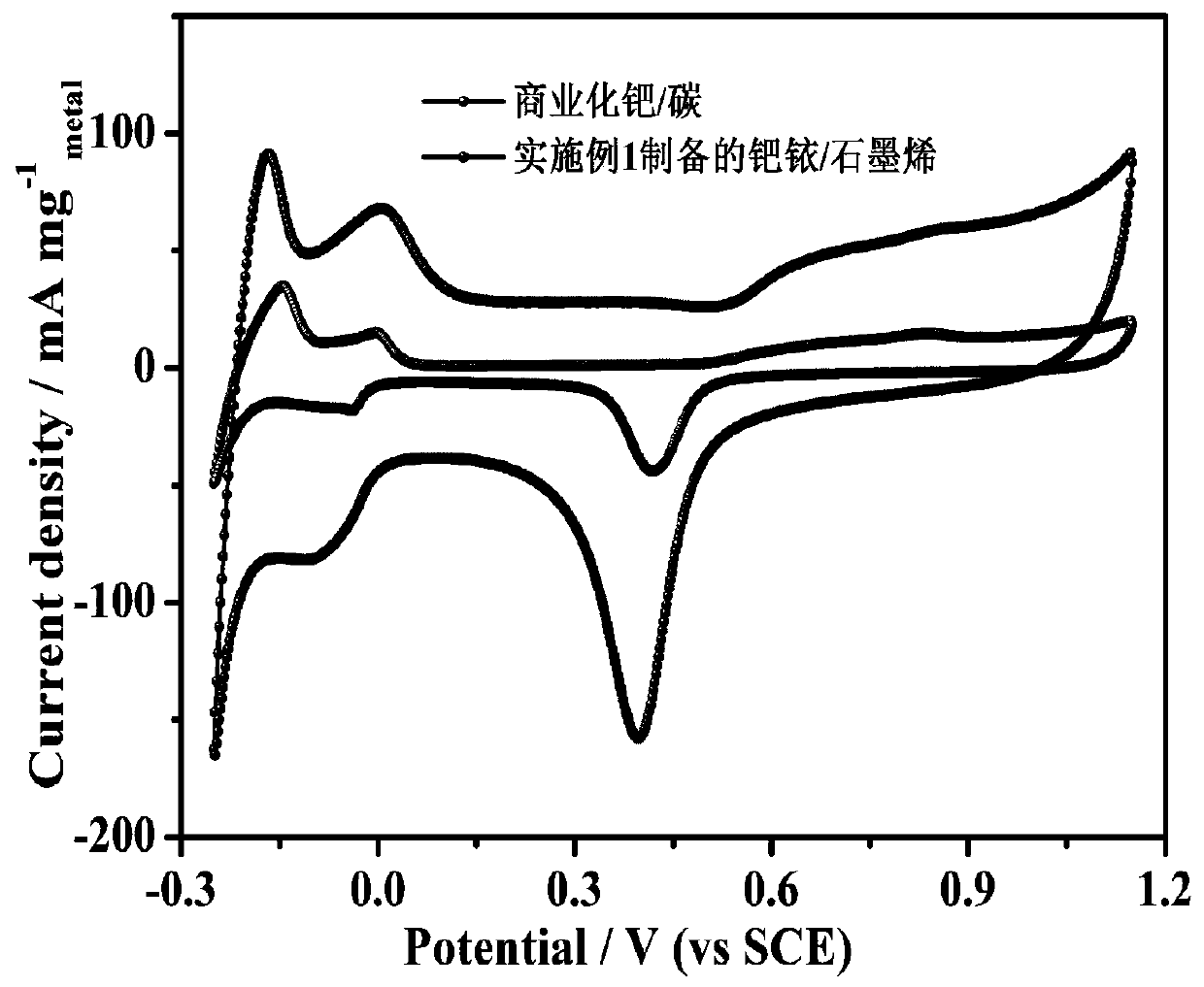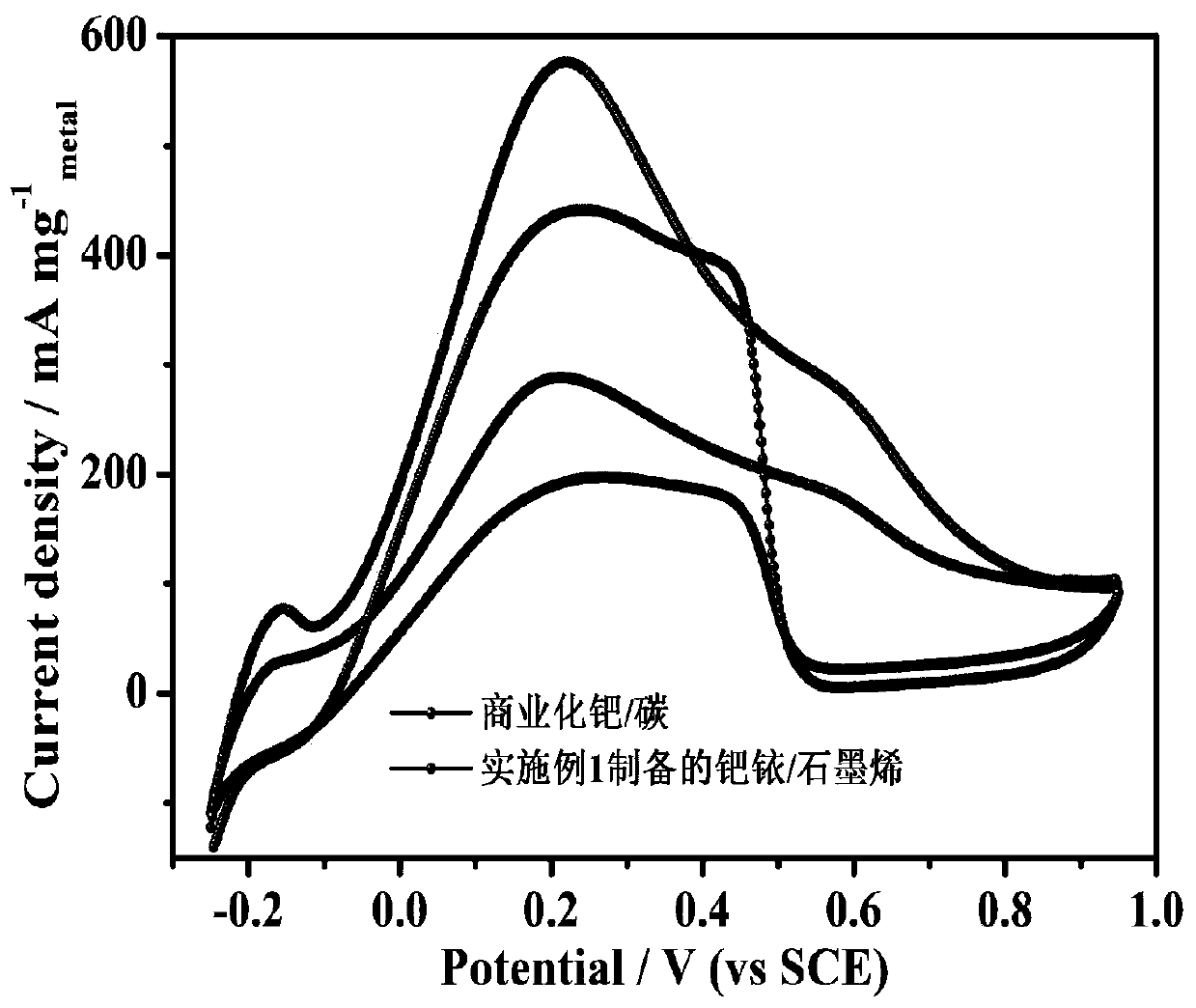Preparation method of graphene supported palladium iridium nanoparticle catalyst and its electrocatalytic application in formic acid oxidation
A nanoparticle and graphene technology, applied in catalyst activation/preparation, chemical instruments and methods, physical/chemical process catalysts, etc., can solve problems such as insufficient catalytic performance, difficult removal, environmental pollution and safety hazards, etc. Application scope and prospect, easy operation, high practical value effect
- Summary
- Abstract
- Description
- Claims
- Application Information
AI Technical Summary
Problems solved by technology
Method used
Image
Examples
Embodiment 1
[0038] The preparation method of the palladium iridium / graphene high-performance formic acid oxidation catalyst of the present embodiment may further comprise the steps:
[0039] 1) Add 15mg of graphene to 8mL of formic acid solution and mix uniformly by ultrasonic at 90°C, the ultrasonic power is 300W.
[0040] 2) 0.286mL chloroiridic acid (7mg·mL -1 Ir ) and 0.221mL sodium chloropalladate (20mg·mL -1 Pd ) the mixed solution prepared by ultrasonication for 1h, the ultrasonic power is 300W.
[0041] 3) Heat the solution homogeneously mixed in step 2) to 90°C.
[0042] 4) Rapidly inject the mixed solution in step 3) into the mixed solution of graphene and formic acid in step 1), and perform ultrasonic treatment for 5 hours under sealed conditions at 90° C., with an ultrasonic power of 300W.
[0043] 5) The product obtained by the reaction is washed and dried at 60° C. for 10 h, which is a palladium-iridium / graphene high-performance formic acid oxidation catalyst.
[0044]...
Embodiment 2
[0049] The preparation method of the palladium iridium / graphene high-performance formic acid oxidation catalyst of the present embodiment may further comprise the steps:
[0050] 1) Add 15 mg of graphene to 5 mL of formic acid solution and mix uniformly by ultrasonic at 80° C., and the ultrasonic power is 300 W.
[0051] 2) 0.286mL chloroiridic acid (7mg·mL -1 Ir ) and 0.221mL sodium chloropalladate (20mg·mL -1 Pd ) the mixed solution prepared by ultrasonication for 2h, the ultrasonic power is 500W.
[0052] 3) Heat the solution homogeneously mixed in step 2) to 80°C.
[0053] 4) Rapidly inject the mixed solution in step 3) into the mixed solution of graphene and formic acid in step 1), and perform ultrasonic treatment for 8 hours under sealed conditions at 80° C., with an ultrasonic power of 500 W.
[0054] 5) The product obtained by the reaction is washed and dried at 80° C. for 16 hours, which is a palladium-iridium / graphene high-performance formic acid oxidation catal...
Embodiment 3
[0060] The preparation method of the palladium iridium / graphene formic acid oxidation catalyst of the present embodiment may further comprise the steps:
[0061] 1) Add 15 mg of graphene to 8 mL of sodium borohydride aqueous solution (2 mg / mL) and mix uniformly by ultrasonic at 90° C. with an ultrasonic power of 300 W.
[0062] 2) 0.286mL chloroiridic acid (7mg·mL -1 Ir ) and 0.221mL sodium chloropalladate (20mg·mL -1 Pd ) the mixed solution prepared by ultrasonication for 1h, the ultrasonic power is 300W.
[0063] 3) Heat the solution homogeneously mixed in step 2) to 90°C.
[0064] 4) Rapidly inject the mixed solution in step 3) into the mixed solution of graphene and sodium borohydride in step 1), and perform ultrasonic treatment for 5 hours under sealed conditions at 90° C., and the ultrasonic power is 300W.
[0065] 5) The product obtained by the reaction is washed and dried at 60° C. for 10 h, which is the palladium iridium / graphene-1 formic acid oxidation catalyst....
PUM
 Login to View More
Login to View More Abstract
Description
Claims
Application Information
 Login to View More
Login to View More - R&D
- Intellectual Property
- Life Sciences
- Materials
- Tech Scout
- Unparalleled Data Quality
- Higher Quality Content
- 60% Fewer Hallucinations
Browse by: Latest US Patents, China's latest patents, Technical Efficacy Thesaurus, Application Domain, Technology Topic, Popular Technical Reports.
© 2025 PatSnap. All rights reserved.Legal|Privacy policy|Modern Slavery Act Transparency Statement|Sitemap|About US| Contact US: help@patsnap.com



